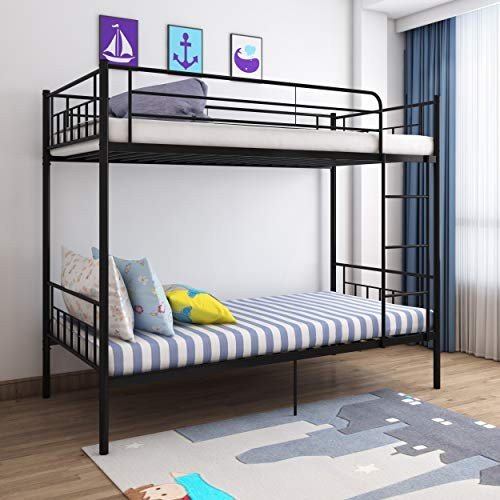5 Qualities That People Are Looking For In Every Bunk Beds Sale
Bunk Beds Sale: A Comprehensive Guide to Choosing the Right Bunk Bed for Your Home
Bunk beds have long been a staple in kids's bedrooms, offering a mix of space-saving performance and fun. Whether accommodating brother or sisters, good friends on sleepovers, or merely maximizing a playroom, bunk beds have become a necessary component in modern household homes. As sales on bunk beds rise, it ends up being increasingly important for consumers to make educated choices when acquiring one. This short article will cover the fundamentals of acquiring a bunk bed, from types to security functions, along with suggestions for maintaining the integrity of your financial investment.
Types of Bunk Beds
When considering a bunk bed sale, it's crucial to understand the various designs available on the market. Below are the most common types:
Traditional Bunk Beds: These include two beds stacked one above the other, sharing a single frame. They are frequently the most economical option.
L-Shaped Bunk Beds: This style includes one bed placed vertically and another horizontally. This plan creates extra space below the upper bed, which can be used for storage or a play area.
Lofted Beds: Similar to traditional bunk beds but without any lower bed. Rather, the space underneath can be utilized for a desk, play area, or extra storage.
Triple Bunk Beds: For families with a bigger number of children or frequent sleepovers, triple bunk beds supply 3 sleeping areas in a space-efficient style.
Futon Bunk Beds: These styles combine bunk beds and futon sofas. The bottom area transforms into a separate seating area, enhancing performance.
Convertible Bunk Beds: These beds can be separated into two specific beds, making them versatile as kids's needs alter with time.
Table 1: Comparison of Bunk Bed Types
Type
Description
Space Efficiency
Extra Features
Traditional Bunk Bed
2 beds stacked vertically
High
Simplest style
L-Shaped Bunk Bed
One vertical and one horizontal bed
Moderate
Play or storage space
Lofted Bed
Raised bed with open space listed below
High
Work/play area
Triple Bunk Bed
Three stacked beds
Really High
Accommodates more users
Futon Bunk Bed
Bunk bed with a convertible futon
High
Multi-functional
Convertible Bunk Bed
Can be split into 2 separate beds
Moderate
Versatility & & longevity
Safety Features to Consider
Safety is critical when buying a bunk bed. Below are essential safety features to look for:
Guardrails: Adequate guardrails ought to exist on both sides of the upper bunk to prevent falls. Best Bunk Beds aprylzolnoske.top need to be at least 5 inches greater than the mattress.
Ladder Design: Look for strong, large ladders with slip-resistant rungs. Guarantee that the angle is not too steep for easy access.
Stability: Ensure the bed is built with strong products, such as strong wood or heavy-duty metal. The bed ought to not wobble when in usage.
Weight Limit: Check the weight capability of the bunk bed to ensure it can accommodate the designated users securely.
Material Safety: If possible, choose beds made from non-toxic products or those meeting safety standards for kids's furniture.
Table 2: Essential Safety Features
Feature
Description
Significance
Guardrails
Sides of upper bed to prevent falls
Vital for child safety
Ladder Design
Strong, slip-resistant rungs
Aids safe and simple gain access to
Stability
Develop quality to avoid wobbling
Makes sure safety and durability
Weight Limit
Optimum weight capacity
Prevents mishaps
Product Safety
Non-toxic, safe materials
Safeguards kids's health
Maintenance Tips for Bunk Beds
To extend the life of your bunk bed and ensure ongoing safety, think about the following maintenance tips:
Regular Inspections: Periodically examine the structure for loose screws, bolts, or any signs of wear. Tighten fasteners as needed.
Clean Periodically: Dust and tidy the surfaces regularly. Usage appropriate cleaners that will not damage the surface.
Inspect Weight Limits: Be conscious of weight limits, particularly with older children or adults who may wish to utilize the upper bunk.
Prevent Climbing on Guardrails: Educate children not to use guardrails for climbing up or playing to decrease the danger of accidents.
Often Asked Questions (FAQs)
Q1: What is the age limitation for children to safely use bunk beds?A: While it varies by the manufacturer, many suggest that kids under 6 need to not oversleep the upper bunk due to safety concerns.
Q2: How can parents dissuade unsafe climbing?A: Setting clear guidelines about bunk bed use and monitoring kids can help. Additionally, utilizing a bed camping tent can discourage climbing while producing an enjoyable sleep environment.
Q3: What should I think about when decorating a room with bunk beds?A: Ensure there is enough space around the bunk bed for safe motion, and make use of the decor to create customized areas for each child.
Q4: Is a lofted bed suitable for older kids?A: Yes, lofted beds can be suitable for older kids as long as they satisfy safety requirements and the child is accountable enough to utilize them safely.
Bunk beds serve a practical function while adding a component of enjoyable to a kid's bedroom. As sales of bunk beds continue to rise, cautious consideration of types, security features, and upkeep practices is vital for parents and caregivers. By understanding these essential factors, households can find the ideal bunk bed for their home, ensuring both usefulness and safety for several years to come. Whether it's for siblings sharing a room or producing a relaxing slumber party space, a well-chosen bunk bed can offer happiness and practicality, making it a worthy investment.
